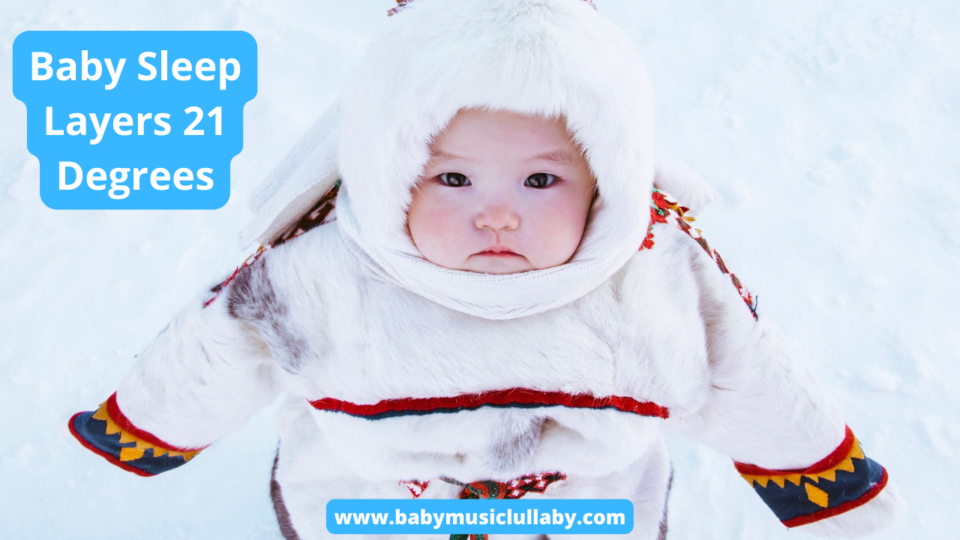Contents
- 1 Introduction
- 2 The Importance of Baby Sleep Layers
- 3 Understanding the Optimal Layering at 21 Degrees
- 4 Tips for Creating a Cozy Sleep Environment
- 5 FAQs about Baby Sleep Layers at 21 Degrees
- 5.1 FAQ 1: How do I know if my baby is too hot or too cold at 21 degrees?
- 5.2 FAQ 2: Can I use a space heater to regulate the room temperature?
- 5.3 FAQ 3: Should I use a thicker blanket for my baby’s sleep at 21 degrees?
- 5.4 FAQ 4: Can I use a fan in the room to maintain a comfortable sleep temperature?
- 5.5 FAQ 5: How many layers should my baby wear at 21 degrees?
- 5.6 FAQ 6: What are the signs of overheating in babies?
- 6 Conclusion
Introduction
Ensuring your baby’s comfort and safety during sleep is of utmost importance. The right number of layers and a suitable sleep environment are crucial factors for a restful night’s sleep. In this comprehensive guide, we will explore the topic of baby sleep layers at 21 degrees. We will provide expert recommendations, valuable tips for creating a cozy sleep environment, and answer frequently asked questions. Let’s dive in and learn how to optimize your baby’s sleep experience!
The Importance of Baby Sleep Layers
Layering plays a vital role in maintaining your baby’s body temperature and providing comfort throughout the night. When it comes to baby sleep at 21 degrees, finding the right balance of layers is essential. Not enough layers may leave your baby feeling cold, while too many layers can lead to overheating. Let’s explore the optimal layering strategies for a comfortable sleep environment.
Understanding the Optimal Layering at 21 Degrees
Layer 1: The Base Layer
Start with a breathable and fitted crib sheet made from natural fibers such as cotton or bamboo. This layer acts as the foundation for your baby’s sleep surface, providing a comfortable and hygienic base.
Layer 2: The Insulating Layer
To maintain a cozy sleep environment at 21 degrees, add a lightweight blanket or sleep sack. Opt for materials that provide insulation without causing overheating. A muslin blanket or a sleep sack made from breathable fabric can be ideal.
Layer 3: Temperature Regulation
In order to regulate your baby’s body temperature effectively, consider using a fan or adjusting the thermostat in the room. This additional layer of temperature control helps create a comfortable sleep environment.
Tips for Creating a Cozy Sleep Environment
In addition to layering, here are some valuable tips for creating a cozy sleep environment for your baby at 21 degrees:
- Room Temperature: Ensure the room temperature remains consistent throughout the night. A temperature range of 20-22 degrees Celsius (68-72 degrees Fahrenheit) is generally recommended for comfortable sleep.
- Ventilation: Proper ventilation is important to prevent stuffiness in the room. Ensure there is adequate air circulation to maintain a fresh and breathable sleep environment.
- Proper Clothing: Dress your baby in appropriate sleepwear suitable for 21 degrees. Lightweight cotton or breathable fabrics are ideal choices to help regulate body temperature.
- Monitor Your Baby’s Comfort: Regularly check your baby’s temperature by feeling their chest or back. Adjust the layers or room temperature accordingly to keep them comfortable.
- Safe Sleep Practices: Follow safe sleep guidelines, such as placing your baby on their back to sleep and keeping the crib free of loose bedding, pillows, and toys. These practices ensure a safe sleep environment.
FAQs about Baby Sleep Layers at 21 Degrees
FAQ 1: How do I know if my baby is too hot or too cold at 21 degrees?
Babies have different preferences, so it’s important to monitor their comfort. Feel their chest or back to check their temperature. If they feel sweaty or clammy, they may be too hot. If their skin feels cold to the touch, they may need an additional layer.
FAQ 2: Can I use a space heater to regulate the room temperature?
Using a space heater can be risky due to the potential fire hazards and the risk of overheating. It is recommended to use a thermostat-controlled heating system or adjust the central heating in the room.
FAQ 3: Should I use a thicker blanket for my baby’s sleep at 21 degrees?
No, it is important to avoid using thick or heavy blankets as they can increase the risk of overheating. Opt for lightweight blankets or sleep sacks made from breathable materials to provide adequate insulation without causing discomfort.
FAQ 4: Can I use a fan in the room to maintain a comfortable sleep temperature?
Yes, using a fan can help circulate the air in the room and create a comfortable sleep environment. Ensure that the fan is positioned safely, away from your baby’s reach.
FAQ 5: How many layers should my baby wear at 21 degrees?
Start with a base layer, such as a onesie or a lightweight bodysuit, and add a sleep sack or a lightweight blanket for insulation. Monitor your baby’s comfort and adjust the layers accordingly.
FAQ 6: What are the signs of overheating in babies?
Signs of overheating in babies include sweating, flushed skin, rapid breathing, and irritability. If you notice any of these signs, remove a layer or adjust the sleep environment to keep your baby comfortable.

Conclusion
Creating a cozy and safe sleep environment for your baby at 21 degrees is essential for their well-being and a restful night’s sleep. By understanding the optimal layering strategies, implementing temperature control measures, and following safe sleep practices, you can ensure your baby enjoys a comfortable and peaceful sleep experience. Remember to monitor your baby’s comfort and make adjustments as needed. Here’s to many nights of sweet dreams and restful sleep for both you and your little one!

 Subscribe to Get Soothing Lullabies to Help Your Baby to Sleep
Subscribe to Get Soothing Lullabies to Help Your Baby to Sleep
1 comment
[…] Baby Sleep Layers 21 Degrees […]